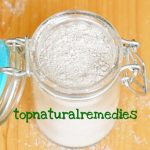12 Symptoms of Histamine Intolerance and What You Can Do About It
Histamine intolerance is one of those dangerous conditions that often get overlooked. Its extensive symptoms are very taxing on your body – they eventually translate to stomach pain, diarrhea and heartburn. They also give you headaches and nausea. Although the reactions are pretty much similar to those of allergies, they’re still pretty much different. Before going any further, let’s first see what histamine does.

Contents
What is Histamine?
Histamine is an essential compound, naturally produced by our bodies. Its main role is in the immune system – it attacks invading bodies in your tissues. This is mainly done when some kind of inflammation takes place. Histamine is secreted by basophils and mast cells and also serves as a neurotransmitter, carrying signals between nerves.
Histamine can be found naturally in some foods, making those with intolerance to it susceptible to aggressive reactions from the immune system. Other foods, even if they’re not containing this substance themselves, can instead make your body release more of it. As the name would say, having intolerance generally means being sensitive even to normal levels of histamine, so special care should be taken when it comes to diet. Let’s first see some signs that suggest you may have intolerance to it.
Symptoms:
Here are 12 symptoms of histomine intolerance:
- Digestive problems
- General confusion (brain fog)
- Unexplainable fatigue
- Bad moods
- Migraines
- Low blood pressure
- Low libido
- Anxiety
- Heart palpitations
- Hormone imbalance
- Eczema
- Nausea
Foods that are high in histamine
- Cheese
- Mushrooms
- Spinach
- Vinegar
- Smoked meat
- Nuts
- Mushrooms
Foods that cause release of histamine
- Bananas
- Strawberries
- Avocados
- Citrus fruits
- Tomatoes
Histamine Intolerance Solutions
First of all, you have to pay attention if the mentioned foods generate unwanted reactions, similar to allergies: sneezing, coughing, watery eyes and itchy skin, to name a few. Look for the symptoms mentioned earlier in this article for a more complex presentation. If you suspect that you have histamine intolerance, these are the steps you should follow:
- Get tested by a doctor
You shouldn’t start taking measures without having professional confirmation and guidance. Seeing how its symptoms can be applied to allergies or other medical issues, it’s best to narrow it down to a precise cause in order to find the best approach.
- Make sure you get tested for interrelated problems
Histamine intolerance may actually be a reaction to other underlying problem such as nutritional imbalances in your body, gluten intolerances or gut problems.
- Eat fresh foods
Your diet should consist of fresh foods that are low in histamine: vegetables, gluten-free grains, fish and lots of tea.
- Improve your gut’s health
The bacteria imbalance in your gut may be responsible for many adverse reactions your body has to histamine. To help restore the good bacteria, consume probiotics and a lot of fiber regularly.
- Consume nutrients that fight histamine
Vitamin C, B6 and copper are very indicated for those with histamine intolerance.
What may seem like a regular allergy can very well be a more serious condition. We recommend to not let symptoms unexamined and take these simple steps towards a healthier life.



